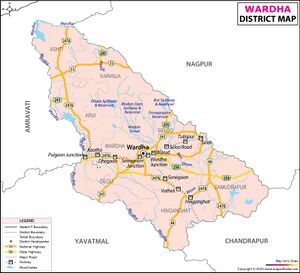Arvi
| Author:Laxman Burdak, IFS (R) |

Arvi (आर्वी) is a town and tahsil in Wardha district of Maharashtra.
Variants
- Arvi (आर्वी) = Arammi (आरम्मी) = Arammi-rajya (आरम्मी राज्य). Arammi-rajya (आरम्मी राज्य) is mentioned in Dudia Plates of 23rd year of Pravarasena II[1]
Origin
Jat Gotras Namesake
- Arwal (अरवाल) (Jat clan) → Arvi (आर्वी) = Arammi-rajya (आरम्मी राज्य). Arammi-rajya (आरम्मी राज्य) is mentioned in Dudia Plates of 23rd year of Pravarasena II[2] Arvi (आर्वी) is a town and tahsil in Wardha district of Maharashtra.
Villages in Tahsil
Town: 1. Arvi
Villages:
1 Adegaon, 2 Ahirwada, 3 Ajangaon, 4 Ajdapur, 5 Allipur, 6 Ambazari, 7 Ambikapur, 8 Antardoh, 9 Ashta, 10 Bahadarpur, 11 Bajarwada, 12 Barha Sonegaon, 13 Bedhona, 14 Belhara, 15 Benoda, 16 Bhadod, 17 Bhaipur, 18 Bodad, 19 Borgaon, 20 Borgaon, 21 Bori, 22 Borkhedi, 23 Bothali, 24 Bothali Heti, 25 Brahmanwada, 26 Chandani, 27 Chandani, 28 Chincholi, 29 Chondi Bahadarpur, 30 Chor Amba, 31 Dahegaon, 32 Dahegaon Mustafa, 33 Daulatpur, 34 Deurwada, 35 Dhanodi, 36 Dhanodi Kh, 37 Dighi, 38 Eklara, 39 Gangapur, 40 Gaurkheda, 41 Gavhankhedi, 42 Goiwada, 43 Gumgaon, 44 Haibatpur, 45 Hamdapur, 46 Harashi, 47 Hardoli, 48 Hivara, 49 Hivaratanda, 50 Hiwara, 51 Husenpur, 52 Irgavhan, 53 Isakpur, 54 Ismailpur, 55 Ithalapur, 56 Jalgaon, 57 Jamb, 58 Jamkhuta, 59 Kachnur, 60 Kakaddara, 61 Kanchanpur, 62 Karmabad, 63 Kasarkheda, 64 Kawadi, 65 Khadaki, 66 Khairi, 67 Khanwadi, 68 Khapri, 69 Kharangana, 70 Khubgaon, 71 Kinhala, 72 Krishnapur, 73 Ladegaon, 74 Lahadevi, 75 Madana, 76 Mahamadpur, 77 Mahamadpur, 78 Maiwadi, 79 Malatpur, 80 Malegaon Theka, 81 Mandla, 82 Maneri, 83 Marda, 84 Matoda, 85 Mirzapur, 86 Morangana, 87 Nagapur, 88 Nandora, 89 Nandpur, 90 Natala, 91 Neri, 92 Nijampur, 93 Nimboli, 94 Pachegaon, 95 Pachod, 96 Pachod, 97 Panjara, 98 Panjara Bothali, 99 Panwadi, 100 Pargothan, 101 Parsodi, 102 Partoda, 103 Patan, 104 Pimpalgaon, 105 Pimpalgaon, 106 Pimpalkhuta, 107 Pipari, 108 Rajani, 109 Rajapur, 110 Rampur, 111 Rasulabad, 112 Ratnapur, 113 Rohana, 114 Saheli, 115 Saikheda, 116 Saldara, 117 Salfal Heti, 118 Sarangpuri, 119 Sarkaspur, 120 Savlapur, 121 Sawad, 122 Sawangi, 123 Sawarkheda, 124 Shahapur, 125 Shirpur, 126 Singona, 127 Sorta, 128 Sukli, 129 Sukli, 130 Takarkheda, 131 Takli, 132 Talegaon, 133 Taroda, 134 Tembhari, 135 Theka Sawad, 136 Tona, 137 Umari, 138 Virul, 139 Vitpur, 140 Wadala, 141 Wadgaon, 142 Wadhona, 143 Wadhona, 144 Wai, 145 Wardha, 146 Wathoda,
Source - https://www.census2011.co.in/data/subdistrict/4017-arvi-wardha-maharashtra.html
Geography
Arvi is located at 20.59°N 79.14°E. It has an average elevation of 328 metres (1075 feet). Arvi is an important centre for the cotton and soybean trade. The closest airport from Arvi is Nagpur Airport situated at 100 kilometres and the closest Railway Station From Arvi is Pulgoan Junction situated at 35 kilometres.The location of Arvi is on Ravandev Garmasur Plateau, which is also a reason for the growth of long thread bearing cotton. Wardha River and Bakli River flowing alongside the borders of Arvi taluka are the main source of water for the villages.
Arvi is also called the City of Saints. Saint Maybai, Saint Pandurang Maharaj, Saint Lahanuji Maharaj (Takarkheda) are the prominent ones having their own followers spread across the Vidarbha region.
History
Dudia Plates of 23rd year of Pravarasena II[3] record the grant, by Pravarasena, of 25 (nivartanas) of land at Darbhamalaka (दर्भमलक) in the Chandrapura Sangamika (चंद्रपुर संगमिक), to one Yakshārya of the Kausika gotra, and of sixty (nivartanas) of land2 at the village of Karmakara (कर्मकार) in the Hiranyapura bhoga to one Kaliśarman of the Kaundinya gotra. The order is addressed to the royal officers, soldiers and policemen in the Arammi-rajya (आरम्मी राज्य) in which evidently both the aforementioned villages were situated. The charter was written by Goladasa while Namidasa was the Senapati. It was issued from Pravarapura.(p.43)
The localities mentioned in the present grant have not yet been satisfactorily identified. Dr. Kielhorn suggested the identification of Chandrapura with Chandpur, 'which lies to the south of Siwani and to the west of the Wenganga riveri’1, but he could not locate the other places mentioned in the grant. Dr. Hiralal proposed to identify Arammi with Arvi, the chief town of the Arvi tahsil of the Wardha District, and Chandrapura with Chandur where there is a confluence of the two rivers Chandrabhaga and Sarasvati. Further, he suggested that Hiranyapura might be Sonegaon near Chandur and Karmakara, Kalamgaon close to the same town2.
These identifications also are not quite satisfactory. A clue to location of the places is possibly afforded by the mention of Hiranyapura. This town may have been situated on the river Hiranya which is mentioned in the Wadgaon plates of Pravarasena II. As shown elsewhere, this Hiranya (हिरण्या) is identical with the modern river Erai3. Chandrapura may be the modern Chanda, the chief town of the Chanda District. This old name of the town is still current. Near Chanda there is the confluence of the two rivers, Erai and Jharpat. In fact the town of Chanda is situated in the angle formed by these two rivers, so that its situation answers to the description of Chandrapura in the present grant viz. that it was a sangamika or ‘a tract of land near the confluence of two rivers’ .
1 Ep Ind., Vol. III, p. 260.
2 I.C.P.B., p. 93.
3 Below, p. 54.
आर्वी
आर्वी भारत के महाराष्ट्र राज्य के वर्धा ज़िले में स्थित एक नगर है। आर्वी ज़िले में प्रशासनिक दृष्टि से तहसील का दर्जा रखता है। यह सन्तों की भूमि भी मानी जाती है। यहाँ "लोकमान्य वाचनालय" नाम से एक बहुत ही पुराना पुस्तकालय है।
Notable persons
Gallery
External links
References
- ↑ Corpus Inscriptionum Indicarum Vol.5 (Inscriptions of The Vakatakas), Edited by Vasudev Vishnu Mirashi, 1963, Archaeological Survey of India, p.42-47
- ↑ Corpus Inscriptionum Indicarum Vol.5 (Inscriptions of The Vakatakas), Edited by Vasudev Vishnu Mirashi, 1963, Archaeological Survey of India, p.42-47
- ↑ Corpus Inscriptionum Indicarum Vol.5 (Inscriptions of The Vakatakas), Edited by Vasudev Vishnu Mirashi, 1963, Archaeological Survey of India, p.42-47

